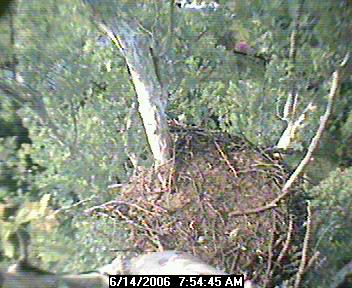
Time to dry out here after alot of rain. Here's another entry from Bent on eagle plumage:
"In fresh juvenal plumage the young eagle is uniformly dark colored "bone brown" to "clove brown" above and below; the flight feathers are nearly black, but there is usually a slight sprinkling of grayish white in the tail. This plumage is worn throughout the first year without much change, except by wear and fading, the under parts fading to "hair brown." After the first annual molt, the next summer, the plumage becomes paler and much mixed with white in very variable amounts. Individual feathers on the back, scapulars, and breast are more or less extensively white, those of the breast and belly being largely white in some specimens. I am not sure whether this is a second or third year plumage, or both; if the latter, the third year is whiter than the second. The tail is more extensively mottled with white than in the first year, and the feathers of the crown and occiput are broadly tipped with pale buff.
After the next annual molt the plumage of the body becomes darker, much like that of the adult, but lightly tipped with white below and mottled with white on the rump and upper tail coverts; the latter and the tail are now quite extensively white; the head is mixed with white above, about half white and half brown, or nearly clear, dirty white below. This is probably the third year plumage. At the next annual molt, early in the fourth year, the bird assumes a plumage that is practically adult, with a pure-white head and tail; but usually remaining signs of immaturity are seen, such as a few brown feathers in the head and some dusky mottling near the tip of the tail. The length of time required to assume the fully adult plumage does not seem to have been positively determined, and it may take longer than I have estimated.
Adults and immature birds have one complete annual molt, which is very gradual, and prolonged through spring, summer, and fall. The flight feathers are molted mainly during July, August, and September."






